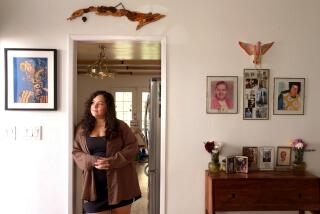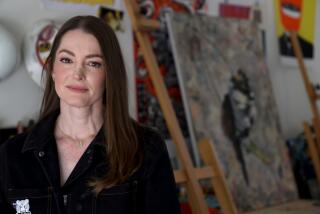Living not just for art but by it
- Share via
So you want be an artist but think the starving part is not for you?
Advice is at hand. Writer Adele Slaughter and actor Jeff Kober have gathered tips for those who wish to make money off their creative pursuits. Their book, “Art That Pays: The Emerging Artist’s Guide to Making a Living,” which came out of a workshop series at CalArts, is a how-to compendium on surviving as an artist.
With a collection of more than 30 interviews and references to other resources (including contact details for recovery programs), the authors ask, “What are the steps that you take to move from the idea of being a painter, a novelist, a poet, a musician, a sculptor, an actor or dancer? What do you do to become a paid professional?”
Chapters detail legal and financial issues, finding a community, working overseas and other practical subjects. The book (dedicated to actor John Ritter) also comes with a CD-ROM with links to additional resources.
“You should have a plan,” says Tom Ormeny, an actor, theater owner and teacher who was among those interviewed by Slaughter and Kober, “but it’s not going to be the same kind of plan that a fireman has.”
And, as many interviewees point out, what you need most -- sigh -- are perseverance and hard work.
Matt Groening, creator of “The Simpsons,” recalls his first odd jobs, including being a “writer/chauffeur.” An 88-year-old movie director hired Groening to write his autobiography and drive him around Los Angeles. Like many supporting gigs on the way to stardom, it was trying at times.
“The topper was it was all about his mother,” Groening says. “Every single page of the manuscript had some reference to her. He would write, ‘At the age of 90, Mother began to lose control of her bowels, which meant frequent stops whenever we went on road trips.’ It was just awful. Horrifying.
“The whole thing felt to me like a weird version of the movie ‘Sunset Boulevard.’ I was like William Holden with this old guy telling me stories about his past.”
Eventually, Groening quit, taking a succession of odd writing jobs.
“I got through this by considering that every form of writing, even typing up a classified, was a piece of writing, and I tried to make it as good as I could.”
And he began drawing “Life in Hell.”
“There was nobody to tell me what I was doing was great; in fact, I got negative reinforcement. My girlfriend at the time thought my cartoons were a waste of time. I think my parents were worried about me, although they gave me no money. They gave me a book about depression, which was really depressing.”
The take-home lesson of all of this?
“I’d say wherever you are in your life, you need to finish the work that you’re doing and it needs to reach an audience.”
Austrian-born painter Hubert Schmalix, a co-owner of the Black Dragon Society gallery in Chinatown, concurs. “There’s not really any advice you can give to a young painter other than to work a lot,” he says. “The hard work, that’s what makes you an artist. There’s no ‘talent.’ ”
Writer James McManus, who wrote the nonfiction “Positively Fifth Street,” four novels, a couple of books of poetry and a collection of short stories, says going to literary parties may make you feel like a writer, but “the main action is the writer alone in a room.”
“A lot of young artists seem to have the impression that art is a game, the opposite of a job. But it is a job.”
You can start by reading the book.
More to Read
Sign up for our Book Club newsletter
Get the latest news, events and more from the Los Angeles Times Book Club, and help us get L.A. reading and talking.
You may occasionally receive promotional content from the Los Angeles Times.









